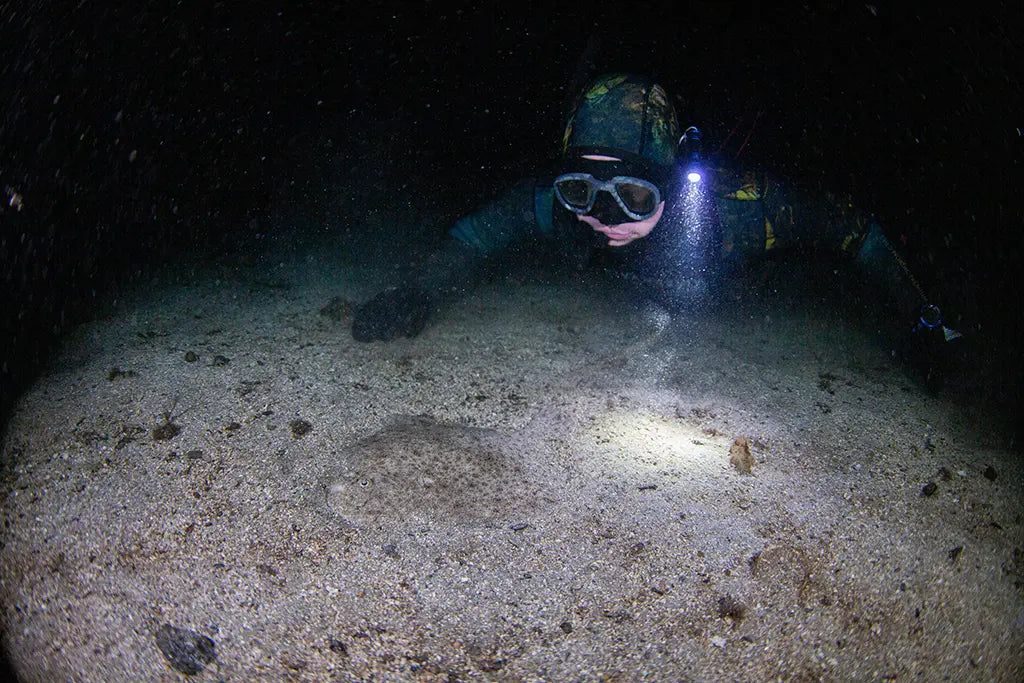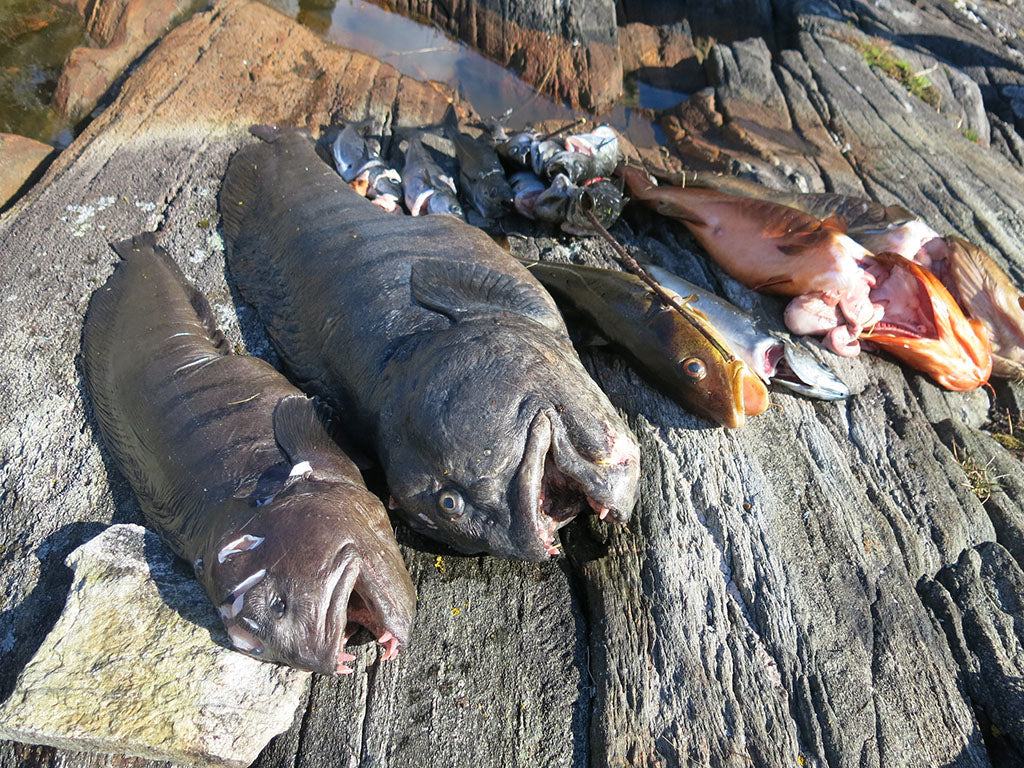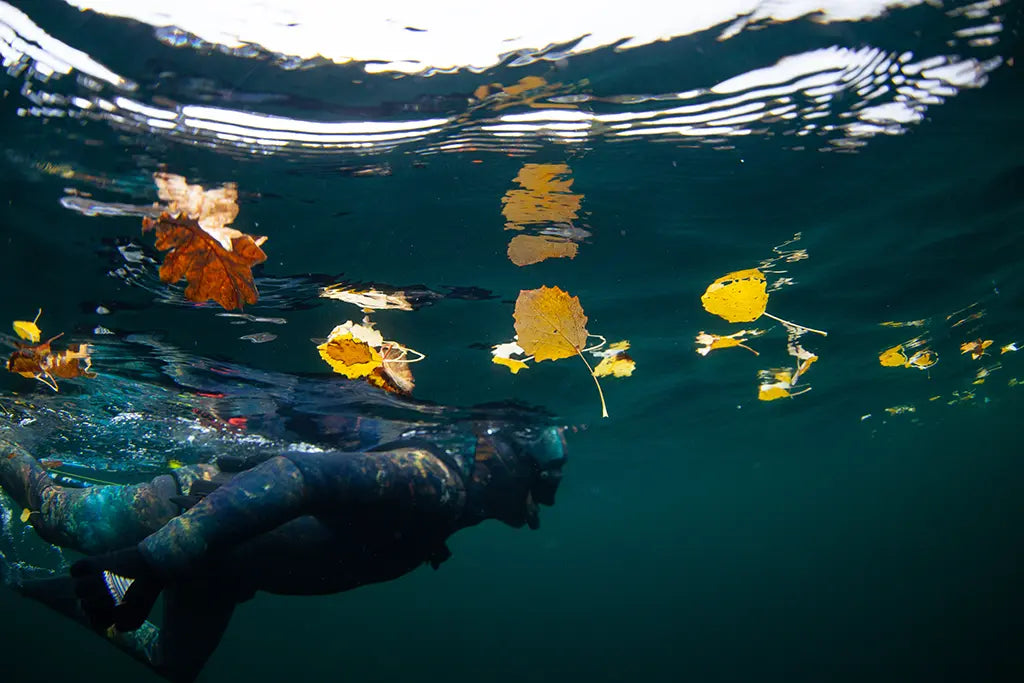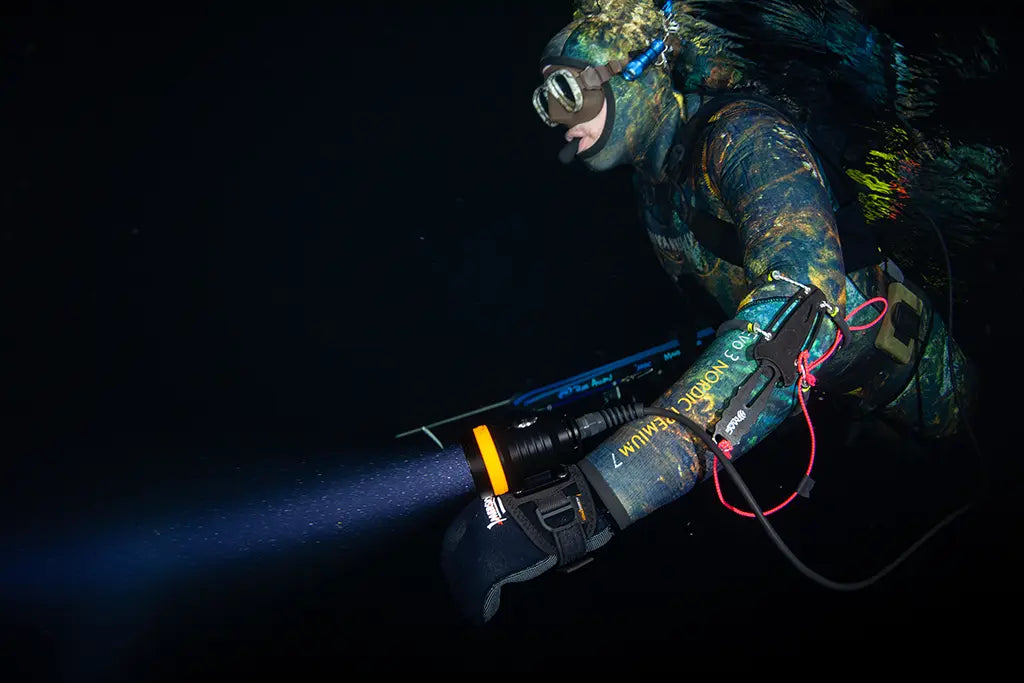Photo: Michael Byø
Hello!Michael Byø, 1982 model raised on red porridge with cream, camel sauce and far too much milk. Has done underwater hunting and freediving in Denmark since I was 12 years old. In 2008, I sought new challenges as an electrician in Norway. From there it went quickly, love blossomed and it resulted in 3 children. Frida 5 years, Freia 8 years and Snorre 13 years.
The first years were spent at Danmarksplass in Bergen, where I went through the critical adaptation phase. To put it briefly, it doesn't rain THAT much in Denmark. In 2014, a move to Stord was announced and we have been here ever since.
In this blog, I will share my experiences about the different seasons that we as free divers and underwater hunters experience in the sea. Read along and get a good basis for experiencing the 4 seasons below the surface.
Autumn in the sea is, for many freedivers, the bright spot in everyday life, which is becoming more and more grey. Visibility gradually improves as the temperature drops and the algae slowly but surely disappears. The fish that have sought refuge in the depths from the warm water along the coast are moving upwards again.
For many underwater hunters, autumn is considered the best time for hunting and gathering
• The water is still warm and comfortable
• The lyre is numerous
• The crabs often have the most meat and the best quality
• The cod moves into the fjords
• Breiflabben are found in shallow water
• Night diving becomes easier in the evening
• The turbot takes a trip up the spring rocks, perhaps
• Flounder such as flounder, plaice and sole are good and firm in the meat.

The stickleback camouflages itself on the sandy bottom. Photo: Michael Byø
The autumn season can have small margins based on temperature and rainfall. The latter can particularly affect visibility in the upper water layers in the fjords. In Western Norway, the season typically lasts until the end of November or a little into December. It is the temperature that is often the best indicator.
If you often dive in an area with a lot of life, and suddenly find that it is now very dead, then note the temperature in the sea. It usually happens shortly after the temperature drops to 8-9 degrees.
Follow the new innovative service www.havvarsel.no, there are also good maps of ocean currents here.
Photo: Michael Byø
Night dive
Autumn is definitely the best time for night diving. The highlight this year is 29 October when we set the clocks back 1 hour. In short, that means 1 hour more in the sea in the evening.
This is the time when parents of young children can dive a lot without it interfering with the time they spend with the children and from experience there are many nice fish to be found right down to a depth of 2m at this time.
If you encounter a lot of fish, it may be a good idea to limit yourself. The best fish is the one that hasn't been in the freezer and then you have the perfect argument to go out again.
Underwater hunting is definitely the most selective form of fishing
The selective privilege entails a great responsibility for the individual practitioner.

Sustainable food gathering
In Norway, we freedivers have unlimited access to the world's largest pantry, the sea.
The Marine Resources Act confirms in §2 that wild marine resources belong to the community in Norway. Allemannsretten ensures that we can move freely almost everywhere on land and along the coast.
When gathering food and hunting with a harpoon, it is us practitioners who choose exactly what and how much we want to take home. This makes underwater hunting the most selective form of fishing. In contrast to traditional fishing methods, we can select a prey, kill it quickly without causing unnecessary suffering and damage. Add to that the fact that our footprint is virtually zero compared to traditional fishing, net and seine fishing.
At the same time, it provides a clear advantage for hunting many species, but at the same time it also comes with a great responsibility. A management responsibility for practicing sustainable fisheries. It is late autumn, visibility is +10 metres, you will find a small area of sand. The scallops are strewn at 1-2 meter intervals. There are probably 30 in total, enough to invite the parents to dinner
- What are you doing? Do you take everything with you and invite the parents for dinner?
Do you take a small part with you (approx. 20%) and become your own Minister of Fisheries with sustainable management responsibility and then come back after a few years and collect a new 20%
A few facts that can help make the decision:
Scallops take 4-5 years to reach the minimum size of 10cm and additional time to grow to a favorable size for harvesting which is +12cm



